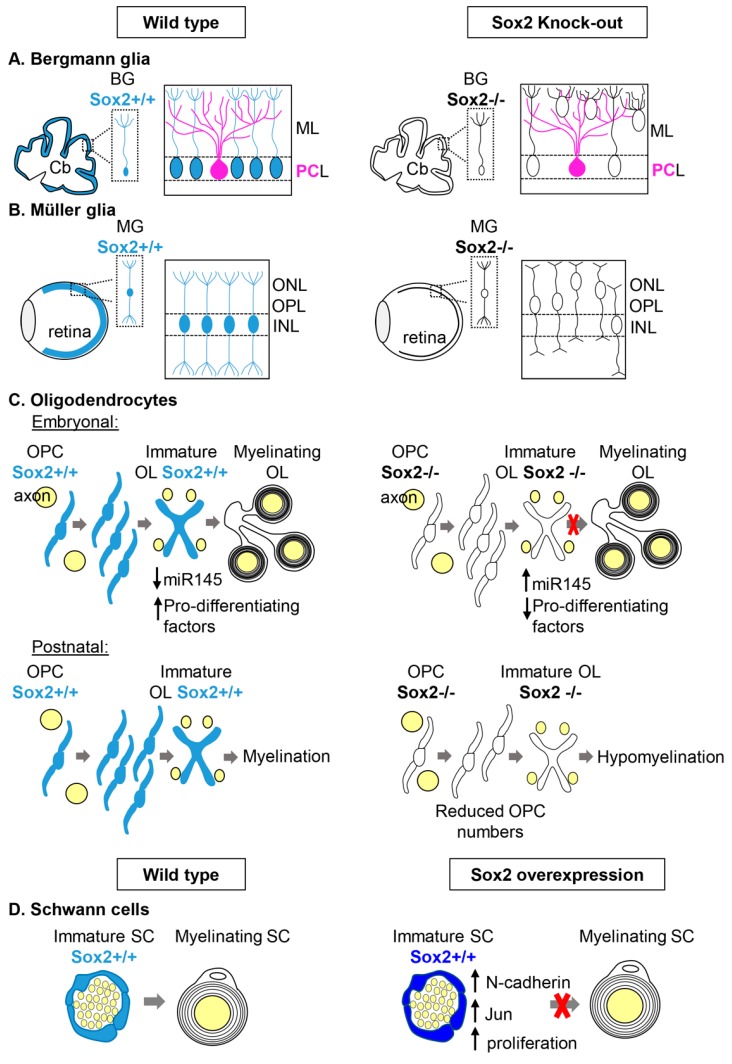Figure 1.
Differentiated glial cells requiring Sox2 function. Glial cells expressing Sox2 in wild type (left) are colored in blue. The corresponding cell types in Sox2 knock-out mice (right) are uncolored. (A) Bergmann glia in the cerebellum. Sox2-positive Bergmann glia cells (blue), forming an ordered array in wild type, that also includes Purkinje neurons (pink), are displaced and abnormal in Sox2 mutants (see text). Abbreviations: Cb, cerebellum; BG, Bergmann glia; ML: molecular layer; PCL, Purkinje cells layer. (B) Müller glia in the retina. Sox2-positive Müller glia cells (blue), forming an ordered array in wild type, are displaced and abnormal in Sox2 mutants, in the context of a thinner retina (see text). Abbreviations: MG, Müller glia; INL, inner nuclear layer; OPL, outer plexiform layer; ONL, outer nuclear layer. (C) Oligodendrocytes. In wild type embryonic oligodendrogenesis (top), Sox2-positive oligodendrocyte precursor cells and immature oligodendrocytes differentiate into oligodendrocytes, thereby, decreasing the expression of miR145, and increasing the expression of myelinating factors; in Sox2 mutants, differentiation of oligodendrocytes is abnormal, as cells retain immature features, and show higher expression of miR145 and lower expression of myelinating factors relative to the controls (see text). In postnatal oligodendrogenesis (bottom), Sox2 loss leads to reduced numbers of oligodendrocyte precursors, and to hypomyelination (see text). Abbreviations: OPC, oligodendrocyte precursor cells; OL, oligodendrocytes. (D) Schwann cells. Wild type immature, Sox2-positive Schwann cells produce correctly differentiated Schwann cells (left); Sox2 overexpression (right, dark blue cells) leads to cells retaining immature features, with upregulation of N-cadherin, Jun, an increase of proliferation, and failing to properly differentiate (see text). Abbreviations: SC, Schwann cells.

